In the four recent mornings I’ve spent photographing hummingbirds on Antelope Island I simply couldn’t resist pointing my lens at these large, fascinating insects when they came in to feed on the same flowers as the hummingbirds.
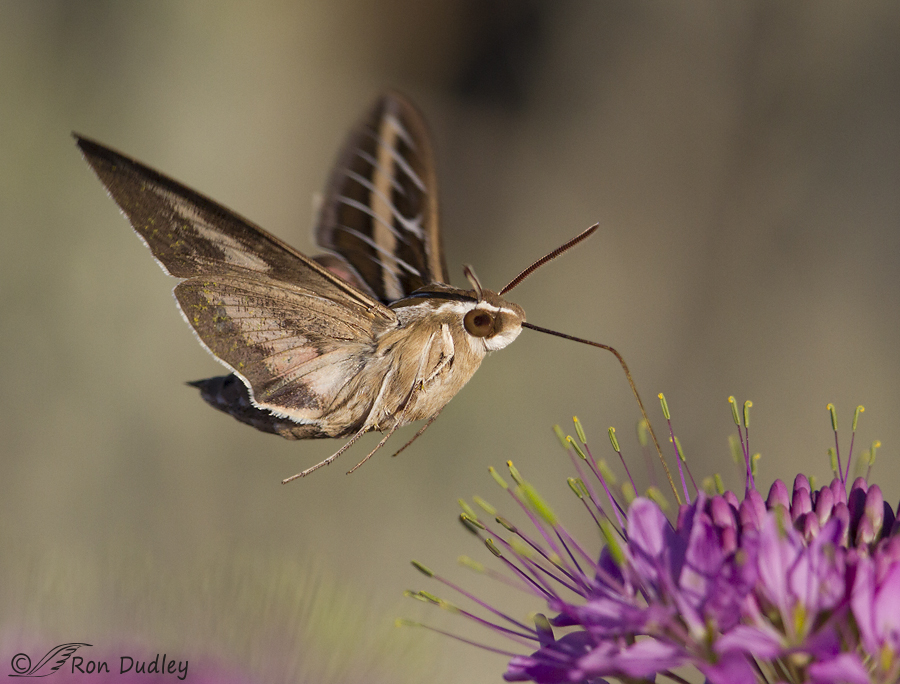
1/4000, f/5.6, ISO 640, Canon 7D, Canon EF500mm f/4L IS II USM +1.4 tc, not baited, set up or called in
They feed in a similar manner to the hummers, using their long proboscis (tongue) to suck up nectar (so this species and several other moths are sometimes called “hummingbird moths”).
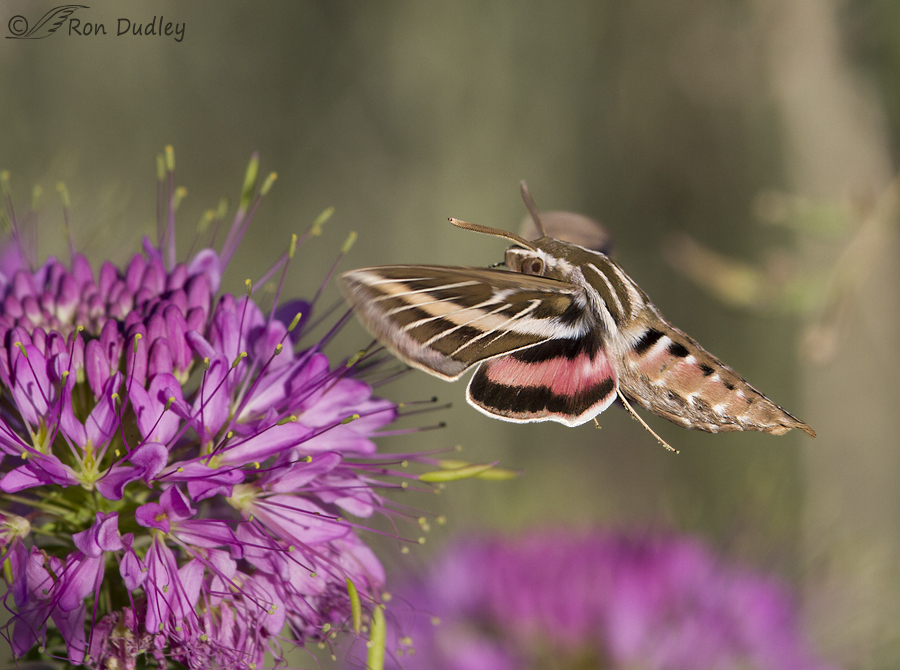
1/2000, f/7.1, ISO 640, Canon 7D, Canon EF500mm f/4L IS II USM +1.4 tc, not baited, set up or called
The pink median band on the hind-wing which is distinctive of the species isn’t easy to photograph – you can’t see it when the moth is at rest or usually even in flight. It’s most easily seen from behind when the wings are swept forward as the insect is hovering over a flower so timing of the shot is critical.
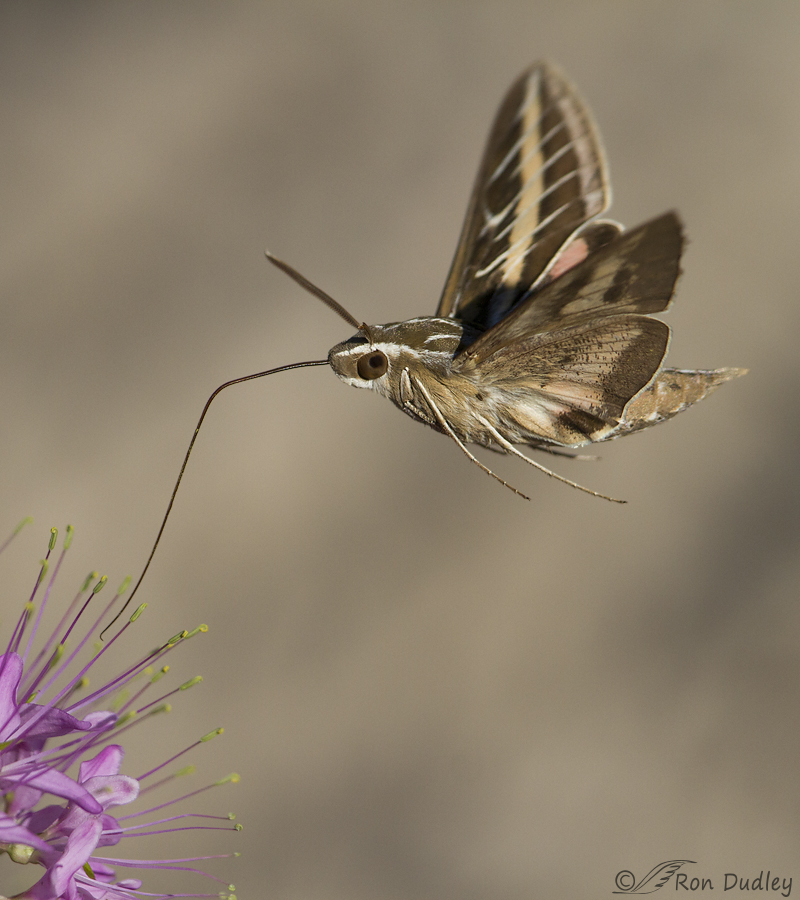
1/4000, f/5.6, ISO 500, Canon 7D, Canon EF500mm f/4L IS II USM +1.4 tc, not baited, set up or called in
The proboscis is surprisingly long and they have incredible control over it. This is probably the best shot I have to show the entire organ.
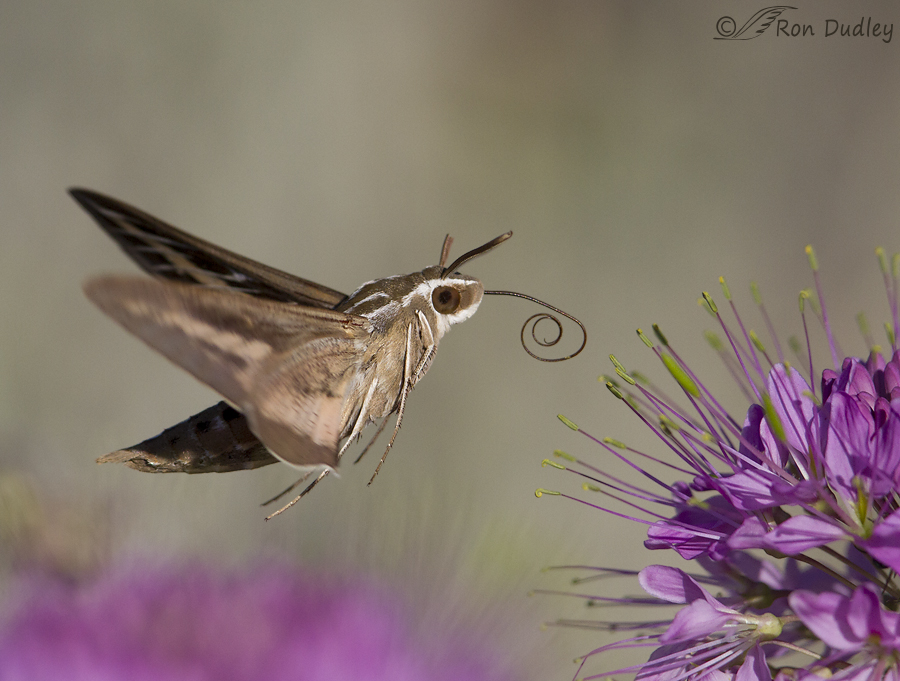
1/4000, f/5.6, ISO 500, Canon 7D, Canon EF500mm f/4L IS II USM +1.4 tc, not baited, set up or called in
When the proboscis isn’t being used it’s stored in a coiled position under the head but since they were always feeding while I was photographing them I had a very difficult time getting it entirely in that position. Here it’s in the process of being unfurled just before it probed into the flower.
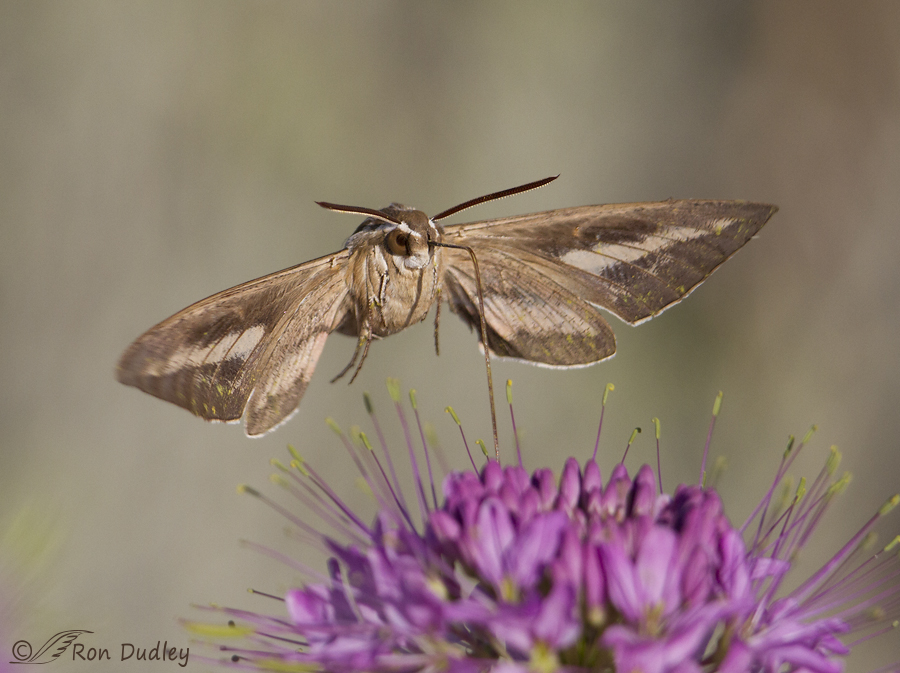
1/4000, f/5.6, ISO 500, Canon 7D, Canon EF500mm f/4L IS II USM +1.4 tc, not baited, set up or called in
The bend or curve in the proboscis tends to be abrupt rather than gradual when they’re probing for nectar (though the position of that bend varies considerably). In other words the bend almost tends to form right angles. I suspect that allows a little more rigidity in the working end of the organ as it probes for the nectar well.
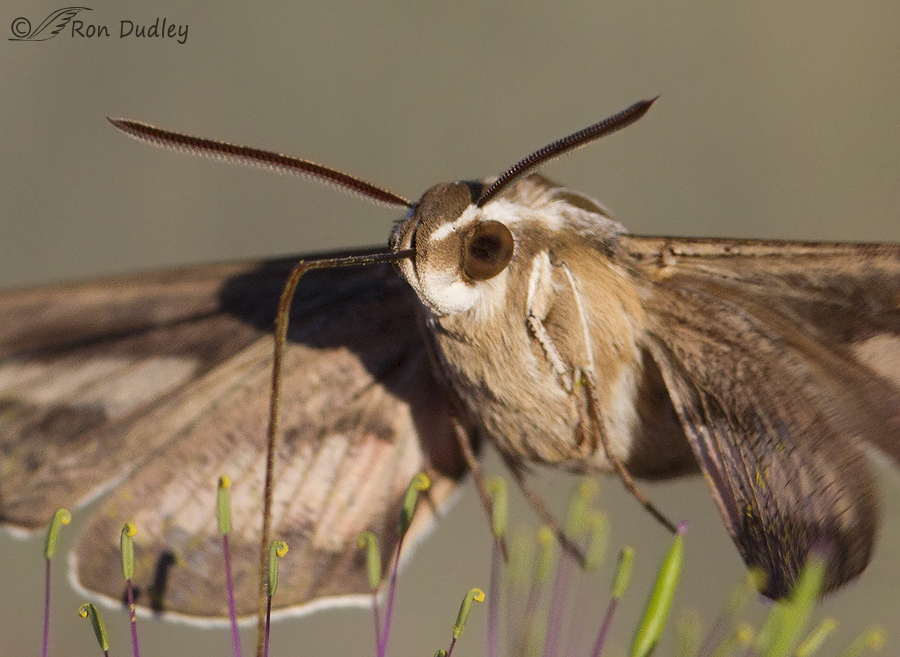
1/4000, f/5.6, ISO 500, Canon 7D, Canon EF500mm f/4L IS II USM +1.4 tc, not baited, set up or called in
I like this shot for the detail it provides of the eye, antennae and upper proboscis where it disappears into the slot on the front of the head.
I spent some time trying to research how to sex these moths but turns out that it’s not easy to do with photos of living moths in flight. Based on the feathery, light-colored lower fringes of the antennae it’s my semi-educated guess that this is a male. Prior to mating males use rows of tiny sensory organs lining the antenna to gather and sense pheromones released by the female and I believe these feathery fringes are those organs.
The weather has turned in northern Utah. Yesterday morning I could see snow on the nearby Wasatch Mountains and this morning’s temperature (55 F) is about 20 degrees colder than it has usually been for many weeks so I suspect I won’t be seeing many more hummingbird moths (or hummingbirds) until next year. I’m going to miss them.
Ron


Ron, this is a belated thanks for kindly directing me to the information below each photo and also spelling it out for me. I haven’t given photography the time it deserves, and go right by the info I need due to my unfamiliarity with the ways lenses are named. Thanks, teacher!
You’re very welcome, Alison. For photographers those techs can be important…
Love it! Great close up details. One time when my husband and I were bike riding, he called out to me from behind that a hummingbird was flying beside me. I looked and it was a huge moth, probably one of these.
These are amazing shots, Ron, for how close that you got and the detail, which is exquisite!
OK, All the adjectives have been taken! You should be give classes on wildlife/bird/mammal/insect(moths)photography! These shots are simply amazing, simply awesome!! I’m just spellbound! You make my day regardless when I get in to look at your shots!!
You often “make my day” with your comments and insight, Dick. Thanks for that!
Some excellent macro work, Ron!
Didn’t even know I was doing macro, Annie – not used to it I guess, with a 500 mm lens…
Wow, wow and wow. And repeat.
Thank you.
Thank you, Elephant’s Child.
These are the BEST shots of this moth that I have ever seen. I have tried in the past to capture a decent photo of one that would visit my garden. Not even close to your wonderful captures. Just totally amazing.
Thank you, Ellen. Believe me, I got a lot of awful shots of these guys too.
These are all beautiful images. I especially like the last one, because of the detail and because it’s one most people would never manage to get. I love being able to see the detail of the face.
I love being able to see the detail of the face.
I’m a “detail freak” too, Susan, which is why I included the image. Thank you.
Ron– wonderful shots of my favorite ersatz hummer, the sphinx moth…I love their big, owlish “eyes”. Sexing them is easy…the males have blue booties, the females have pink….:-)
Thanks, Patty. I wish your “booty” story was true – would have saved me a lot of time.
Sensational shots of this beautiful insect!
Charlotte
Thank you, Charlotte.
Ron, these are absolutely phenomenal. You know, because you always share such remarkable shots, I have to remind myself that you’re an individual, not a National Geographic team! I can’t imagine being able to capture such stunning detail. By the way, would you be willing to share the actual name and brand of your zoom lens? Thanks for everything – everything!
Wow, Alison – thank you very much for the kind words.
Actually, I don’t use a zoom lens. It’s a prime 500 mm lens (no zoom). It’s the Canon EF500mm f/4L IS II USM, as listed in the techs below each of my photos.